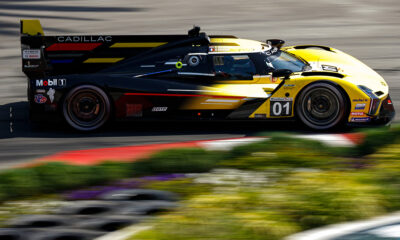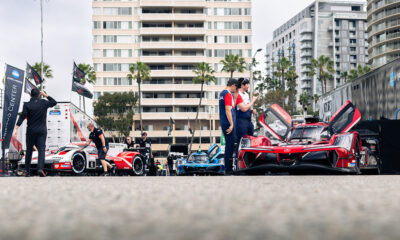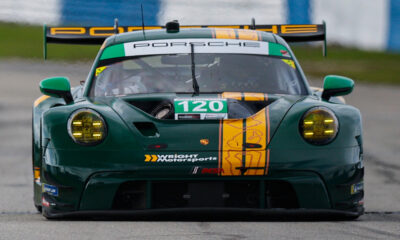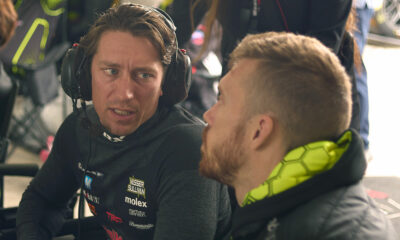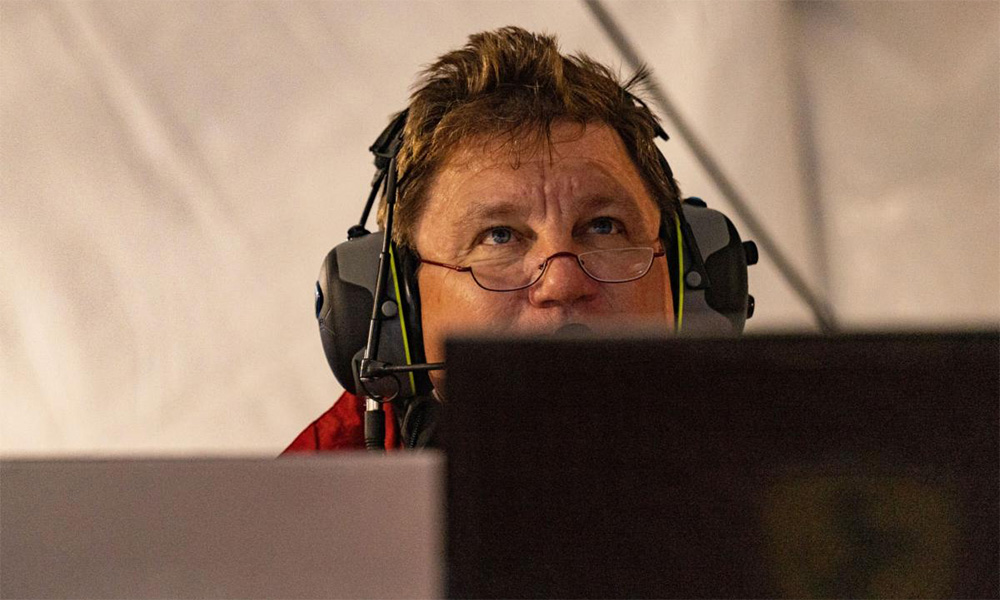
Photo: Risi Competizione
Rick Mayer, race engineer of the No. 62 Risi Competizione Ferrari 488 GT3 Evo 2020, shares his insight ahead of this weekend’s Mobil 1 Twelve Hours of Sebring.
Daniel Serra, Davide Rigon and Eddie Cheever III will pilot the GTD Pro class entry.
General: The field of 53 cars for this year’s Twelve Hours of Sebring is huge, up from last year’s 37-car field. Going through my notes I don’t recall a field this large. The high car count for LMP3 (10) and LMP2 (8) could increase the number of full course cautions, particularly as the LMP3 Am driver lap times are very close to GTDP times.
The GT cars all have ABS where the LMPs do not. This could make for a lot of dicing between the LMP3 and GTs when the Am’s are in the LMP3s and the Pro’s are in the GTs. It’s a large number of cars for the bumpy 3.74 mile, 17-turn track.
Pit boxes will be small but larger than Daytona. IMSA has done a great job of placing GTs next to prototypes in the pits and minimizing interference from having a car in the same class immediately next to you.
The high amateur content and car count in the GTD (17 cars) field will again require patience in the race. You don’t have large banking sections like Daytona to clear traffic, and now all the GTs have the same BoP by manufacturer, and all are on the same Michelin tires. The only difference between GTD and GTD Pro are the drivers.
GTD Pro: The Porsche’s had an advantage at Daytona with banking speed and fuel economy over the other cars including our Ferrari 488 GT3. There were some significant changes within the GTs BoP for Sebring but not much for the Porsche’s.
The Aston’s lost some power but also lost 50 kg of weight. The BMW was the big gainer with 127 mb boost increase and a 25 kg weight reduction. How that will play out at Sebring is not clear.
There’s no minimum wing angle at Sebring like Daytona. Sebring is considered a high downforce track, but also a power track while Daytona is definitely a low downforce track. A lot of our straight-line competitiveness will depend on how much wing (added drag) the others run in high downforce trim compared to Daytona.
How will the combination of BoP adjustments and high downforce trim change the relative straight-line performance? We likely won’t know until far into the race when max power is required.
The Track: Sebring is a historic track hosting the longest running endurance race in North America. It’s also one of the toughest tracks to get the setup right; you’re always chasing the setup (moving target) as the track changes throughout the week with the weather, and tire degradation is significant.
In recent years all the support series have run on Michelin tires. When the support races were on Continental tires the rubbers between the two tires didn’t mix well. It took time to get the Continental rubber replaced with Michelin rubber on the track and get the grip back.
The Ferrari struggled with dissimilar rubber. That’s not the case anymore. Most of the WEC ‘support race’ field is on Michelin tires for their eight-hour race on Friday.
The track is super bumpy in sections, which means you want to go in a softer setup direction (anti-roll bars and springs). There are numerous near threshold braking zones that require good platform support (pitch control) and two sections where change of direction is important, which doesn’t suit a soft setup.
So, it’s a conundrum. You need very good braking here and that is a main area for gains, and the brakes need to be consistent and last all 12 hours. The drivers need confidence in Turns 1 and 17 on the bumps to commit to the throttle early at the exits and a good platform in Turns 3-4 and Turns 15-16 for the change of direction.
Good power down out of Turns 5, 7, 10, 13 and 16 aids in a quick lap, as they all lead on to relatively long full throttle sections.
You reach over 140 mph five times a lap here so power is extremely important in lap time, as is running as much downforce as you can. The ABS of the GT3 cars will help with braking stability over the non-ABS we had with the GTLM cars.
The Setup: Sebring is a compromise; the car needs to be at its best in the closing hours of the race when it is dark with decreasing track temperatures. Daytime pace needs to be controlled with smart driving, staying with the leaders, and not damaging the car.
The forecast is very hot and everyone will struggle with grip in the afternoon. You need dampers that support the car but are compliant, with enough high-speed damping to settle and control the car through the bumps. Too much damping upsets the car on the bumps but not enough and you lose platform support/control.
Ride heights are always higher than the legal minimum (at least with the Ferrari) to keep the car from bottoming mainly in Turn 17 (left side) and the exit of Turn 1 (right side).
The typical GT Ferrari setup direction is moderate springs with anti-roll bars on the soft side. GT cars, in general, struggle with rear stability under braking at turn-in, and historically, this is the worst track for this tendency. A soft setup tends to aggravate this tendency.
The Ferrari 488 GT3 is no exception. ABS has significantly improved this, allowing the use of softer springs. We will setup the car to maximize bumpy surface braking efficiency. Good power down (and good BoP power) is important with the many long straights; most are not actually ‘straight’ but are long full throttle sections.
If you get the rear stable, the tendency for off-brake mid-corner understeer becomes the next problem, which delays the ability to go to power.
The Race: The last decade or so has seen the end to the classic endurance race strategy where you’d save the car to make it to the end, even at Sebring. The cars are all so reliable now that long races are just long full-on sprint races.
The large field will likely increase the amount of full course cautions. We only had a couple of pit stops at Daytona that weren’t around a safety car. You need good pace all race in all conditions as there’s no guarantee of the past years’ numerous safety cars to bunch the field back up. You must make it to the end and be up front to be in contention for a win.
You have to race careful and clean, as penalties for avoidable contact are steep; you’ll easily go down a lap in the penalty box. The GTD and GTD Pro count is large and if the BoP is close, it will be hard to pass any GT car.
The addition of the full course caution class splits with LMPs and GTs avoids some overzealous LMP drivers making low percentage passing moves on GT cars while they work through the field after a safety car.
Personally, this is my favorite track and it’s been a good track for Risi Competizione with numerous podiums and three GT class wins. Let’s just hope our luck changes and we get the top step at Sebring!



















